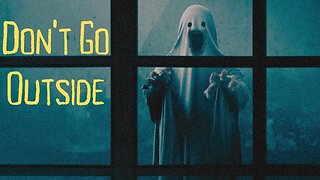This Emperor Gum Moth is actually beautiful
This is the beautiful moment.
The Emperor Gum Moth glues its eggs onto eucalypt leaves, which the large green caterpillars eat when they emerge. The caterpillars are covered in protective spines and build a tough cocoon in which to pupate. They may reinforce this cocoon with bark and remain inside it for one or more years depending on environmental conditions. The adults emerge in summer. The life span of adult Emperor Gum Moths is limited to only a couple of weeks because they are unable to feed. They must rely solely on the energy consumed as caterpillars. When the caterpillar is fully mature it spins a dark brown silken cocoon on a branch which usually has a leaf to protect it with. When spinning is complete, the caterpillar sheds its final skin and takes the form of its pupal life stage. Within a day of spinning completion, the cocoon sets to a hard waterproof shell with a rough exterior and a smooth interior wall. Air holes can be seen along the side of the cocoon indicating that the cocoon is probably otherwise airtight. The moth usually emerges from the cocoon the following year (in spring or early Summer) but depending on weather conditions can stay in the cocoon from anywhere between two and five years.
When the metamorphosis is complete, the adult moth regurgitates a fluid to soften the tough cocoon and then cuts a hole using sharp hooks on the base of each forewing. The effort to release itself from the cocoon is vital for its wings to expand and dry after emerging. Pupae cut from the cocoon will hatch, but the moths' wings will never expand.
The emperor gum moth does not feed after it emerges from the cocoon, relying solely on the energy it stored as a caterpillar. Their adult life span is limited to a couple of weeks in which they mate, lay eggs and die. The moths, like the caterpillars, are very striking in appearance. The emperor gum moth is a very large moth, having a wingspan of 120 to 150 mm. Females are generally smaller than males. The furless wings and body are multi-colored, but are in overall tones of pale reddish/brown. The wings are decorated with four prominent 'eyes' and various other markings in a symmetrical formation. The antennae of the males are feathery, while the females' are thinner and with fewer hairs.
-
![[PRANK CORNER] Grandma Theft Auto!!](https://hugh.cdn.rumble.cloud/s/s8/6/Y/t/N/d/YtNdl.0kob.1.jpg) 0:42
0:42
Funny Channel
9 months ago[PRANK CORNER] Grandma Theft Auto!!
25 -
 0:10
0:10
craigdunmore
3 years ago $3.13 earnedLight pollution over Leamington, Canada actually looks beautiful
6.46K41 -
 1:00
1:00
eslambdear
2 years agocat beautiful cat beautiful cat beautiful
713 -
 1:03
1:03
Shalyn
3 years agoBeautiful moth hatchling
50 -
 6:42
6:42
Vehicles Unlimited
17 hours ago2024 Chevrolet Trax Activ // The Best Compact SUV This Year?
9453 -
 29:54
29:54
TampaAerialMedia
17 hours agoMiami Travel Guide - Downtown, Key Biscayne, Coral Gables
1.14K2 -
 9:06
9:06
Mally_Mouse
15 hours agoCongress is getting trashy
1.76K15 -
 1:15:15
1:15:15
TheTapeLibrary
12 hours agoScary Stories On A Rainy Night (Rain Sounds | Relaxing Horror Stories To Fall Asleep To)
4.55K -
 3:41:38
3:41:38
The Jimmy Dore Show
1 day agoThe Jimmy Dore Live Panel Show
140K140 -
 8:02:15
8:02:15
SNEAKO
11 hours agoFRESH EDATE, SPECIAL GUEST, BIG STREAM
132K72